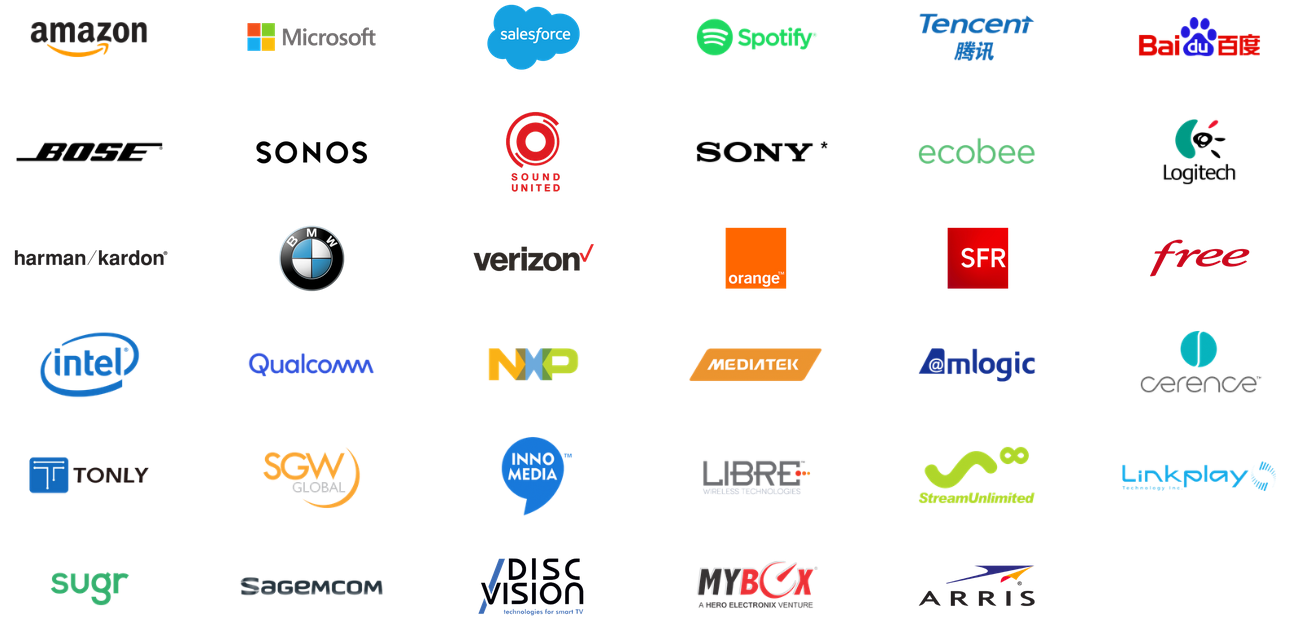We’ve come a long way with voice-based interfaces in the last several years: They can find and play the music you like, tell you jokes, set timers, control your lights and help you shop, among many other things. But the battle lines were drawn from the start when it came to territory. The biggest hardware companies — Amazon, Apple, Google, Microsoft and Samsung — have up to now built their own voice assistants, taking a proprietary approach to encourage growth of their own ecosystems of services around their devices.
That model limits consumer choice, however, and it limits the kinds of developments that might spring out of a more collaborative, cacophonous approach.
Now we are seeing small signs of how that might be shifting. This week, Amazon announced the formation of a new consortium called the Voice Interoperability Group, which aims to create a set of standards and technology for hardware to handle one voice service, with users able to trigger one voice over another by way of “wake words.”
“Multiple simultaneous wake words provide the best option for customers,” said Jeff Bezos, Amazon founder and CEO, in a statement. “Utterance by utterance, customers can choose which voice service will best support a particular interaction. It’s exciting to see these companies come together in pursuit of that vision.”
A common voice
The group has some 35 launch members, covering a range of companies that span hardware, the services that run on them, and the providers of the internet access that enables those to be there in the first place. In addition to Amazon, they include Baidu, BMW, Cerence, ecobee, Microsoft, Orange, Salesforce, SFR, Sonos, Spotify, Tencent, Verizon (TechCrunch parent) and more.
Alongside supporting different voice assistants on a single device, the group’s aim is to work with component makers such as Intel and Qualcomm to develop memory and processing power to handle that increased load.

But if you think this sounds like a big move to breaking down territorial boundaries set by the biggest players in vertically integrated voice and hardware services, look closer and you will see some very notable absences. Namely, Google, Apple and Samsung are among the bigger companies that are not on board.
This was at least partly intentional on the side of Amazon. Apple and Samsung have not responded to requests for comment, but from what we understand, Google was contacted only over the weekend about the new group that got announced Tuesday. As a result, it says it is still evaluating the news.
“We just heard about this initiative and would need to review the details, but in general we’re always interested in participating in efforts that have the broad support of the ecosystem and uphold strong privacy and security practices,” said a spokesperson.
The voice assistant market is still at a relatively low penetration rate, even in the most advanced markets. eMarketer estimates that in 2019, 111.8 million people in the U.S. will use a voice assistant at least once per month.
That works out to 39.4% of internet users and 33.8% of the population, and is up 9.5% from 2018 (and itself has been revised upward due to stronger-than-predicted demand) — all good news, but as a point of comparison, smartphone penetration in the U.S. is at about 81 percent (265.9 million users in a population of just over 329 million people in the country), and they are used significantly more than once per month.
In other words, at best, we’re still very much at the start of the growth curve; at worst, it may be very hard indeed to kickstart a more habitual usage of these things.
Heard not seen
That presents an interesting conundrum for the very big players. They can either continue to closely guard their own ecosystems while they slowly build out their business models and tie users to potentially a unique set of services found only in those particular ecosystems (with unique devices to match). Or they can open up as much as possible to attract as many users as they can. They can do this by catering to as wide a variety of use cases as possible, by partnering with other companies in the ecosystem and by making their own voice assistants as ubiquitous as possible.
It’s not unlike the two directions that Apple and Google went with their mobile strategies.
With this announcement, Amazon is taking the latter route, the one Google took on mobile, by preaching an open-ended model that will open its own devices to more services, but just as importantly present its own assistant to appear in many more places.
Coincidentally, although Google is not a part of the Amazon-led consortium, it has started to make its own effort to start to branch out beyond its own controlled rollout of the Google Assistant: Today it also announced, separately, that the Google Assistant would be coming to an expanded list of Chromebooks, not just those “Made by Google.”
I wouldn’t be surprised either to see Google spearhead an effort similar to Amazon’s, or join it to see how it develops. Keep your friends close, as they say, and your enemies closer.
Amazon’s efforts with this new interoperability group came with interesting timing, a day ahead of Amazon’s big hardware event (which we are attending and covering).
With its Alexa assistant and Echo devices, Amazon has become the market leader and market maker when it comes to voice interfaces. The company at its event this week is likely to reveal new devices and new services running on them, so it’s notable that Amazon has prefaced the event with a message that undercuts the perception that Amazon is too dominant.
Indeed, forming an interoperability group is not a completely altruistic move. Yes, it will give a lot of voice assistants that today do not have a “home” in the form of popular, established hardware and wider ecosystems.
(“We’re in the midst of an incredible technological shift, in which voice and AI are completely transforming the customer experience,” said Marc Benioff, Chairman and co-CEO at Salesforce, in a statement. “We look forward to working with Amazon and other industry leaders to make Einstein Voice, the world’s leading CRM assistant, accessible on any device.”)
But, it’s also going to potentially work in the other direction, too: Amazon will look to place its Alexa in more locations, including hardware that has been developed to compete directly with its Echo devices. That, in turn, will give Amazon a steady stream of new customer adoptions even if its own hardware sales start to level out.
“We value freedom of choice, empowering listeners to choose what they want to listen to and how they want to control it,” said Patrick Spence, Sonos CEO, in a statement. “We were the first company to have two voice assistants working concurrently on the same system, a major milestone for the industry. We are committed to a day where we’ll have multiple voice assistants operating simultaneously on the same device, and are working to make that happen as soon as possible.”
All that is assuming that an interoperability group will actually produce results. At its most cynical, industry groups that bring together traditional competitors only pay lip service to collaboration and at the end of the day face too many cultural differences and competitive barriers to allow for true cooperation and development.
All that is irrelevant to us, the consumers, who might ultimately only ever use one platform (and possibly no voice service at all), but at least deserve the opportunity to try out other things if we choose to.
“Customers … don’t want to be locked into using a specific voice service, and that means we’re going to see more households become multi-assistant environments,” said Mariana Zamoszczyk, senior analyst for Smart Living at Ovum, in a statement. “This trend means that device makers and AI developers need to prioritize interoperability with other services, and work to deliver differentiated, personalized experiences through their own products or assistants.”
